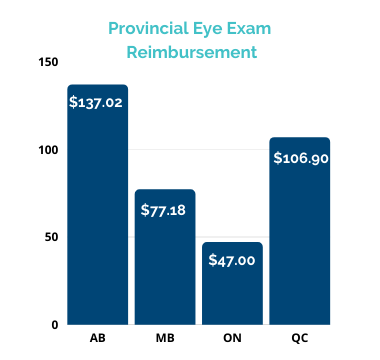Vision loss is more common than you think. Mountain Eye Care and the Canadian Association of Optometrists (CAO) are teaming up to prevent vision loss by reminding Ontario residents to have an annual eye exam performed by a doctor of optometry.
“Seventy-five per cent of vision loss can be treated or prevented,” says Dr. Chadda from Hamilton “People often mistake good vision for good eye health, leaving many susceptible to living with an undetected eye disease.”
In a 2011 report on the cost of vision loss in Canada, CNIB estimated that over one million people in Canada are living with blindness or vision loss, which is more than the number of Canadians with breast cancer, prostate cancer, Alzheimer’s and Parkinson’s combined.
The CNIB estimates that vision loss costs Canada’s economy $15.8 billion per year and believes this number will exponentially increase as our population ages.
“Many of the eye diseases that cause vision loss can be treated if they are detected early,” explains Dr. Chadda “But because many are symptomless in the beginning, by the time people seek treatment, it’s often too late.”
The following five eye diseases and conditions are the leading causes of vision loss in Canada.
- Age-related Macular Degeneration (AMD): In the earliest stages, macular degeneration is entirely symptom free. The most common initial symptom is slightly blurred central vision when performing tasks that require you to see detail.
- Cataracts: Cataracts develop without pain or redness. Some indications that a cataract may be forming include blurred or hazy vision that cannot be corrected by changing your prescription, or the feeling of having a film over your eyes that does not go away with blinking.
- Diabetic retinopathy: Diabetes and its complications can affect many parts of the eye. Diabetic retinopathy occurs when there is a weakening or swelling of the tiny blood vessels in the retina of your eye, resulting in blood leakage and the growth of new blood vessels.
- Glaucoma: Glaucoma is almost always symptomless. Your doctor of optometry will perform a simple and painless procedure called tonometry during your routine eye exam, which measures the internal pressure of your eye to check for glaucoma.
- Refractive errors: People with Myopia (nearsightedness) will often have trouble seeing the whiteboard, the television set or other distant objects. People with Hyperopia (farsightedness) often experience difficulty in concentrating and maintaining a clear focus on near objects.
These five diseases and conditions can be treated and in some cases prevented by visiting your optometrist for a comprehensive eye exam on an annual basis. The [provincial association] and CAO also recommend Ontario residents wear UV-protective sunglasses all year round, don’t smoke, exercise regularly, control diabetes and maintain a healthy diet – all important steps for maintaining healthy eyes.
To book an eye exam with a doctor of optometry today, visit: optom.on.ca/.


